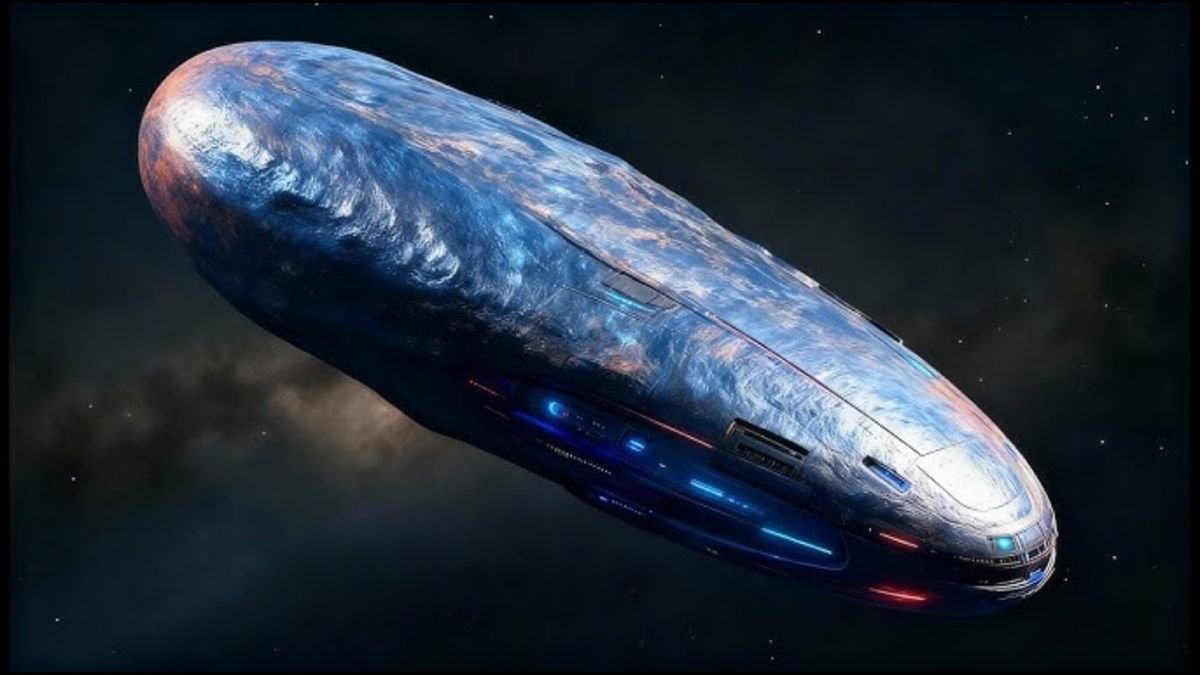3I/ATLAS Cosmic Visitor Discovery Shocks NASA: On July 1, 2025, a unique astronomical event caught the attention of scientists. The NASA-funded ATLAS (Asteroid Terrestrial-impact Last Alert System) survey telescope recorded unusual activity in Rio Hurtado, Chile. Initially, scientists considered it a normal comet, but when detailed analysis was done on it, it became clear that 3I/ATLAS is not an ordinary celestial body.
There were no other comets and asteroids in the solar system as 3I/ATLAS had a different star system origin. The icy nucleus of it might be still older than our own. It may be viewed as a space ambassador, and it is presenting us with the news of the events of the celestial bodies that are billions of years old. This has enabled the astronomers to have a rare chance of knowing about interstellar objects and how they came to be.
Scientific Discoveries from the James Webb Space Telescope
On 6 August 2025, the James Webb Space Telescope observed 3I/ATLAS with its near-infrared spectrograph (NIRSpec). The results were surprising. This comet exhibited some unusual quantities of carbon dioxide and nickel, as found in interstellar visitors, which were found to be abnormal in the research.
NASA scientists believe that these discoveries could completely redefine theories of planetary and star formation. By studying its chemical composition, scientists will try to understand the type of environment in which 3I/ATLAS formed, possibly billions of years ago in a distant star system.
NASA planetary scientist Dr. Emily Sanders says:
This is an object of once-in-a-life. It is like we are gazing at a fragment of another galaxy as we view it through our telescope.
Therefore, 3I/ATLAS does not only present a scientific uniqueness, but it is also capable of propelling our science of astronomy to a higher level.
Immense Size and Structure
Not only is 3I/ATLAS chemically unique, it is also very huge. The SPHEREx spacecraft of NASA demonstrated that its coma, the blanket of gas and dust about its nucleus, is about 26,400 × 24,700 kilometers. This is close to being twice the size of the earth.
Pre-discovery data from the Vera C. Rubin Observatory showed that its coma was 13,040 kilometers across on June 21, 2025, and increased to 18,760 kilometers by July 2. This makes it the largest and brightest interstellar visitor ever observed. Its magnitude and brightness provide a golden opportunity for astronomers to study it in depth.
Journey to the Sun
3I/ATLAS’s closest approach to the Sun is scheduled for late October 2025. Although it will not pose any threat to Earth, studying it is a unique opportunity for scientists.
NASA said that TESS (Transiting Exoplanet Survey Satellite) detected that the comet started to have comet-like activity already May 7, 2025, when the comet was approximately 6.4 AU. This is to mean that it was already shedding gas and dust and as such scientists were able to observe its chemical and physical alterations.
Therefore, 3I/ATLAS not only occupies a unique place in size and structure, but also gives scientists a chance to realize the life cycle of interstellar objects and their influence at the proximity of the Sun.
Interstellar Objects and Theories of Planet Formation
The most interesting fact about 3I/ATLAS is that it might alter planet forming theories. Scientists are of the opinion that these kind of interstellar objects might even serve as seeds in building planets. They contain organic materials and dust and might lead to the formation of planets in other star systems.
Provided it is proven, 3I/ATLAS would open the doors of understanding how the rest of the star systems, such as our solar system, were formed. It might also demonstrate how the material of one star system could travel through the interstellar space and add to the formation of other planets in another system.
This finding would lead to a new era in astronomy. Interstellar objects such as 3I/ATLAS can assist us in knowing the movement of matter in the universe, the formation of planets and the development of stars. This will not only enlighten us on the origin of our solar system, but also grant us access to the secrets of the construction and history of the whole universe.
Conclusion
The research of 3I/ATLAS is not just significant in astronomy, but it also brings the humanity closer to the discovery of the cosmic mystery. Its chemical composition, huge comet, interstellar formation and the possibility of influencing the formation of planets make it a rare heavenly treasure. This object is being examined by scientists to know not only its history but also the formation of life and planets in the universe.
As Dr. Sanders said, this is a once-in-a-lifetime object. 3I/ATLAS makes us realize that the universe still holds countless mysteries, and we only need the right approach and tools to discover them. This interstellar messenger not only inspires scientific curiosity, but also makes us realize the unique possibilities of cosmic travel and discovery.
FAQs:
Q. What is 3I/ATLAS?
A. 3I/ATLAS is an interstellar object that was first detected on July 1, 2025, by the ATLAS telescope in Chile. Unlike regular comets, it originated from another star system.
Q. How is 3I/ATLAS different from other comets?
A. It contains unusual amounts of carbon dioxide and nickel and has a massive coma, making it chemically and physically unique compared to comets within our solar system.
Q. How large is 3I/ATLAS?
A. Its coma spans approximately 26,400 × 24,700 kilometers, almost twice the diameter of Earth, making it the largest interstellar visitor ever observed.
